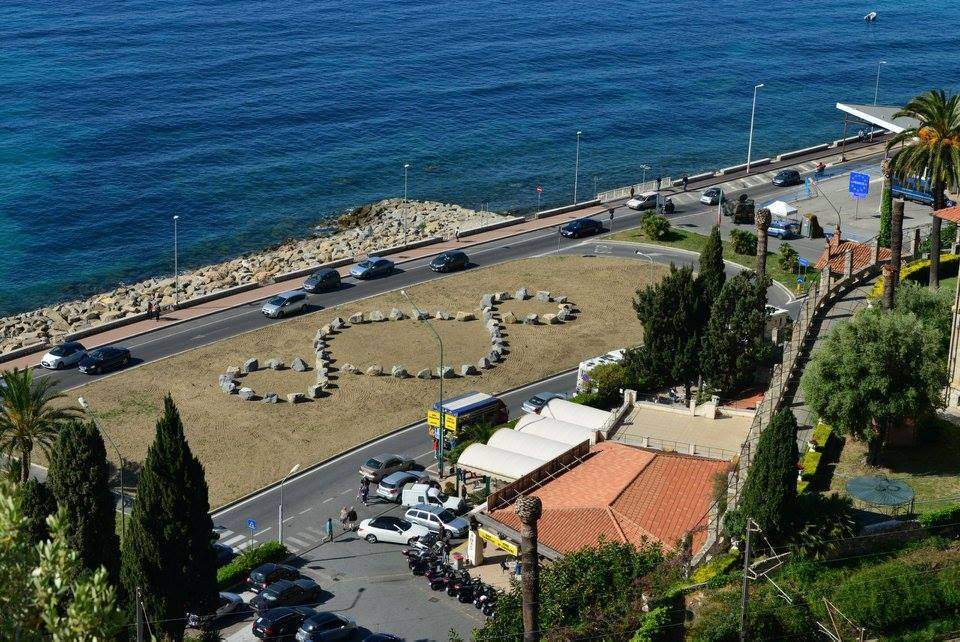In Ventimiglia, a Pistoletto work could be removed to make way for a parking lot
A parking lot could erase a work of environmental art by Michelangelo Pistoletto (Biella, 1933): this is happening in Ventimiglia, where the administration led by the new mayor Gaetano Scullino, a representative of the center-right led by the League and winner in the first round with 52 percent of the preferences in the May 26 elections, is launching a proposal to create a parking lot with about fifty car stalls in place of the Piedmontese artist’s Third Paradise, located on the waterfront just before the border with France. In short, for the new administration, the needs of motorists come before art, so the Third Paradise, which is barely two years old (the first stone was laid on April 12, 2017), is likely to be dismantled and end up in another hamlet (with relocation possibly agreed upon together with the artist, the new municipal administration points out).
In Ventimiglia, the new mayor’s proposal obviously divides and controversy ensues. If there is no shortage of citizens who, to the cry of “this is not art” launched on social media, greet positively the idea of erasing the work in order to create a new parking lot near the sea, in the same way as those who consider the problems of viability more pressing, there are also many who consider it a bad idea. “Redevelopment of the Gateway of Italy through a concrete pour?” is the rhetorical question posed in a note by the previous municipal administration, which is the opposite of the one that emerged victorious in the last elections. “We do not believe it is possible that the much heralded redevelopment of the area during the election campaign,” the statement reads, “means nothing more than sacrificing the work of a living contemporary artist, such as the internationally recognized master Pistoletto, in order to propose a parking lot. The border with France is highly symbolic, instead of destroying the work, ask Anas to take care of the flowerbed so that the work is more visible. This initiative makes clear what importance the current Administration intends to give to art and culture, and what redevelopment means.”
When it was created, in the center of a large flowerbed already present on the site, the work was intended to embody a precise allegorical meaning, as a symbol of overcoming barriers and borders, having been placed in an area long in the national news (it was the place crowded by migrants waiting to leave Italy to reach France). On the occasion, Pistoletto had also been awarded the honorary citizenship of Ventimiglia, and the project had been carried out in collaboration with the Education Department of the Castello di Rivoli, among the most important contemporary art museums in Italy.
It is not certain, however, that the work will be moved, since the Anas project (which has jurisdiction over the area) could also incorporate Pistoletto’s work. But the simplest hypothesis cannot be ruled out, which is that the work’s days are numbered and that the flowerbed with the Third Paradise will be flooded with concrete and stripes.
Pictured is Michelangelo Pistoletto’s Third Parad ise in Ventimiglia.
 |
| In Ventimiglia, a Pistoletto work could be removed to make way for a parking lot |
Warning: the translation into English of the original Italian article was created using automatic tools. We undertake to review all articles, but we do not guarantee the total absence of inaccuracies in the translation due to the program. You can find the original by clicking on the ITA button. If you find any mistake,please contact us.





























